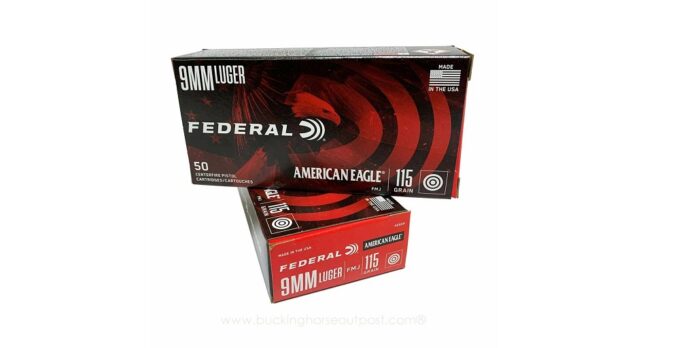Got a light handgun that kicks hard? There are things you can do about it, starting right now.
Take a look at these 5 basic tips for helping to manage recoil.
Shoot a Lighter Round
To be clear: this does not mean “get a gun in a different caliber.” It means get a different round from the one you’re shooting. Same cartridge, different load data.
Take a look at the box of ammo you have with you at the range. Look for the technical or load specifications until you find “muzzle energy,” which is measured in foot-pounds, or ft-lbs.
It is also usually disclosed on product detail pages. For instance, take a look at this American Eagle 9mm Luger round (115 grain).
See on the product page where it says “356 ft-lbs” of muzzle energy?
Now look at this Blazer Ammunition (Brass cases, 9mm, 124 grain) round. See where it says “327 ft-lbs” of muzzle energy?
Even though the Blazer Brass shoots a heavier bullet than the American Eagle 9mm, it will kick less because it produces less muzzle energy.
That figure – muzzle energy – is your magic window into recoil. The higher the figure, the worse the recoil.
Shoot lighter rounds and the gun will kick less.
Establish a Proper Grip and Hang Tight
Whatever gun you are shooting, think “high and tight.” That’s the way to grip a gun to cut recoil.
With your shooting hand, grip your gun as high on the frame as possible, until the back of your hand is right up to the bottom of the slide.
Wrap all your fingers fully around the grip, with your thumb extending forward along the base of the slide. Wrap your support hand around your shooting hand, with your support thumb lying alongside your shooting thumb.
Lock your elbows, and grip the gun as hard as you can without shaking.
Lean In
Whether you choose an athletic stance, a Weaver or Isosceles stance hardly matters. How you stand does.
Standing stick-straight, especially if you are a smaller-framed shooter, is a recipe for getting knocked over when you pull the trigger.
Bend your knees slightly and drop your center of gravity by an inch or a few.
Then – and most importantly – lean in a little bit. You want to be pressed forward ever so slightly into your shooting stance, so that the mass of your body weight helps absorb some of the force of recoil.
Dry Fire Practice (to Stop Flinching)
Get some snap caps and bring them to the range. Then, every so often, practice some dry fire training with your snap caps.
The reason for this is that it can help you break the terrible, horrible, no good habit of flinching.
Not only does flinching destroy accuracy, but it can also make you “break form” before the trigger breaks, which makes you much more susceptible to the forces of recoil.
Dry fire practice until you stop flinching, and then sprinkle in some range dry fire practice every so often even after that.
Note: Dry fire practice can be dangerous; Only practice at the range and always keep your gun pointed in a safe direction.
Install a Compensator
Last but not least, consider installing a compensator if your pistol can accept one.
The other tips mentioned here are designed to help you cope with recoil. This tip will actually dramatically cut recoil itself.
In fact, some compensators can cut the recoil you feel by as much as half, and they do not adversely affect shot power.
So, if you shoot a hard-kicking cartridge like a .40 S&W or .45 ACP, then a compensator might be one of the best upgrades you can make for your gun.


